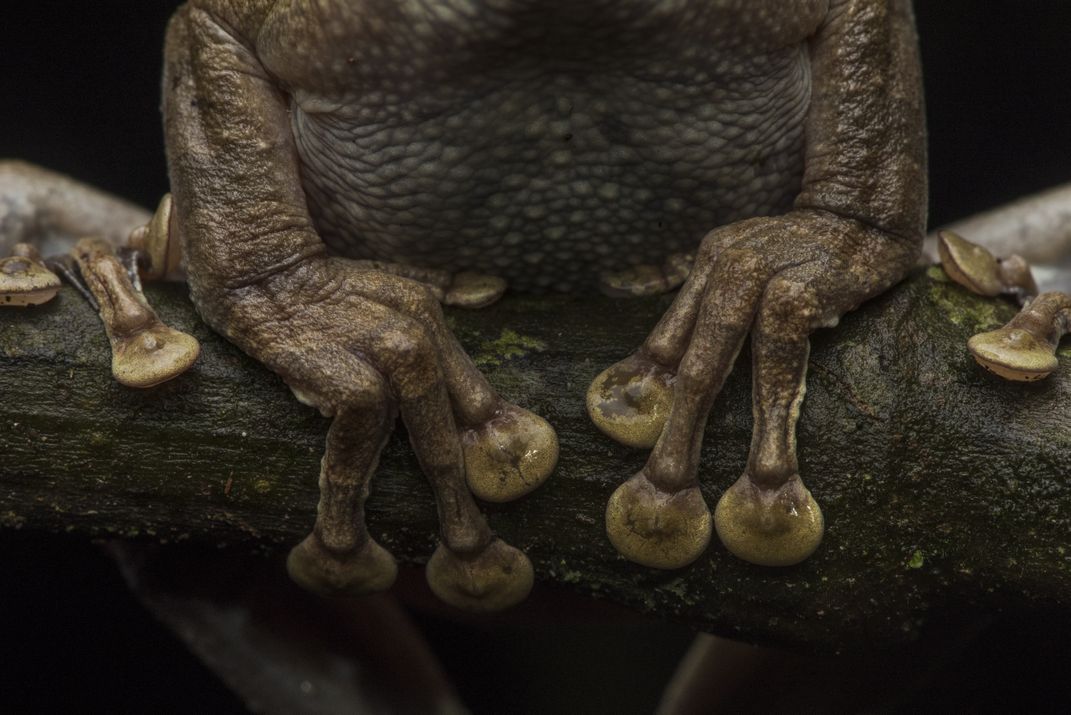
These pick up sound waves and carry them into their internal ears. Instead, frogs have a tympanic membrane behind each eye. Although frogs have a good sense of hearing, they don’t have typical external ears. Their nostrils are located on the top of the head to allow breathing while most of the head is submerged. Tree frogs have suction cups on their toes that allow them to cling to the bark of trees.įrogs have large, bulging eyes that rotate in their socket, providing sight in almost any direction. Their front feet are not webbed and usually have four toes. Aquatic frogs have webbed rear feet, usually with five toes. Their muscular back legs also work well for swimming. Some frogs are able to leap 20 times their body length! Their front legs are short and specially designed to absorb the impact of landing. The adult frogs then lay their eggs and begin the cycle again. The young frog grows and matures to adulthood over a period of 2-4 years. Internally, the tadpole’s gills are replaced with lungs until finally, the tadpole has become a frog. Then front legs develop and the tail becomes shorter as it is resorbed. The first sign of further development is the appearance of hind legs. The tadpole continues to swim, eat and grow for several weeks before it matures to the next stage. Its tail grows longer and a fin forms, which allows the tadpole to swim effectively. As the tadpole develops, it forms gills that allow it to breathe efficiently underwater. The tadpole looks more like a fish at first than like a frog. Within 2 to 25 days, depending on water temperature, the egg hatches into a tadpole. The fertilized egg is a single cell that rapidly divides, again and again, producing new cells that quickly differentiate into the organs of the frog embryo. The outer layer of a fertilized egg is a jelly-like material that swells in water, forming a protective coating. The male frog fertilizes the eggs as they are laid. The female frog usually lays eggs in water in a string or mass that sticks to vegetation. The lifecycle of a frog begins with a fertilized egg. (Toads are also tailless, leaping amphibians, but they usually have rough, warty skin.)įrogs range in size from less than 0.5 inches to 12 inches long! Frog Science Lesson Frog Life Cycle Others are terrestrial, staying mostly on land or in trees. Some frogs are aquatic, spending most of their time in the water. What makes frogs different from other amphibians? They have smooth skin, are usually tailless as adults, and have the ability to leap. There are three orders of amphibians: frogs and toads with over 2,000 species, salamanders (including newts) with approximately 300 species, and caecilians with about 160 species. The name Amphibian means literally ‘both life.’

#Frog webbed feet skin
They have moist skin that water can pass in and out of, and most of them spend part of their life (in the tadpole-like larva stage before they mature) in the water. Download: Frog Dissection Lab Introduction to Frogsįrogs are animals that belong to the class Amphibia, commonly known as amphibians.Īmphibians live both on land and in the water sometimes they live in water only before they are fully grown.
#Frog webbed feet manual
They’re smaller animals (requiring less manual dexterity) and can be raised quickly for laboratory work. They’re also practical, too.įrog dissection is cheaper to conduct than larger animal and organ dissections. Why do we dissect frogs? As it turns out, a frog dissection, like other complex animal dissections, reveals enough about how our bodies work to be valuable.


 0 kommentar(er)
0 kommentar(er)
